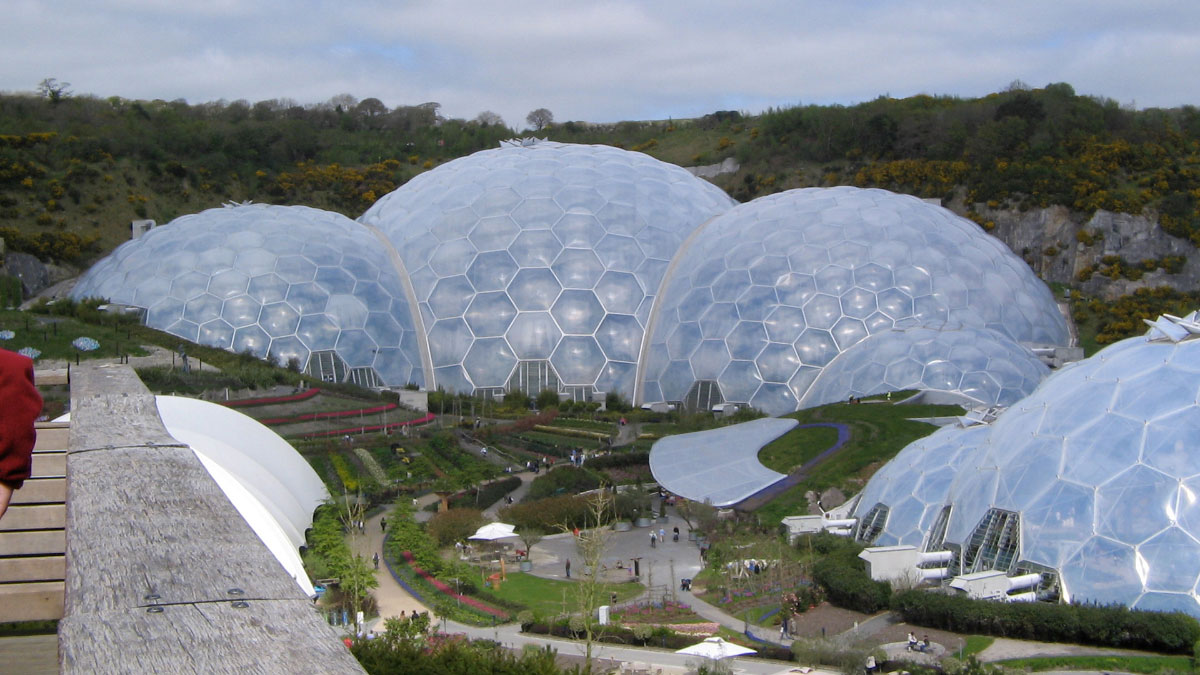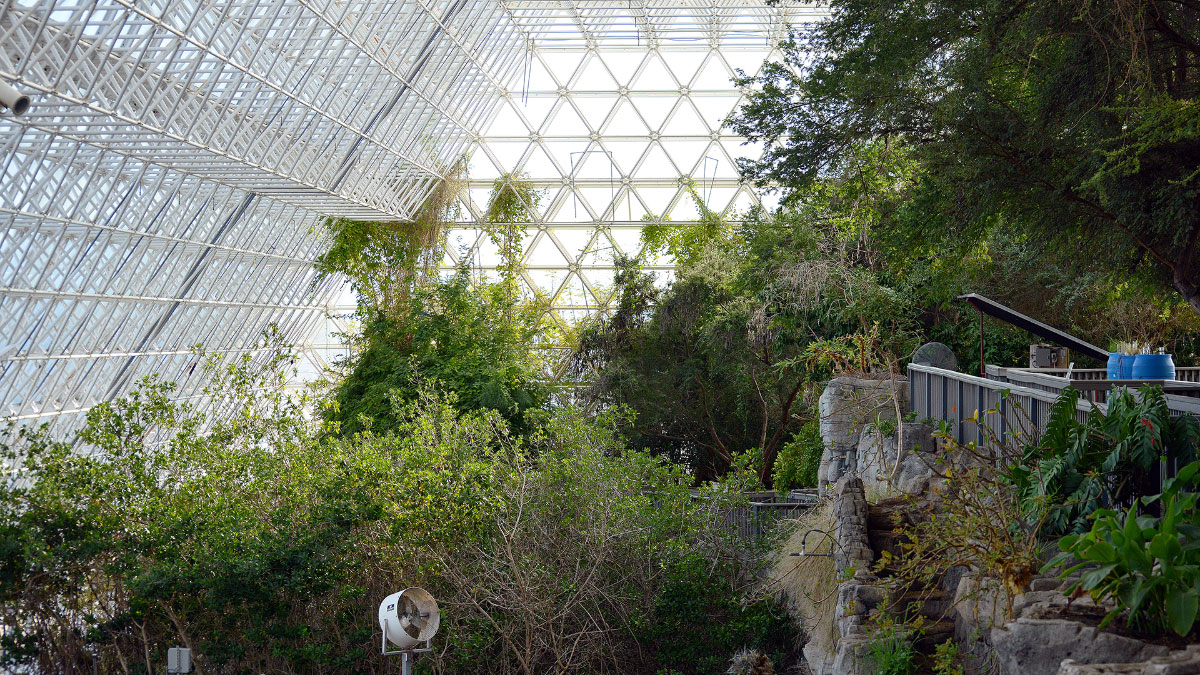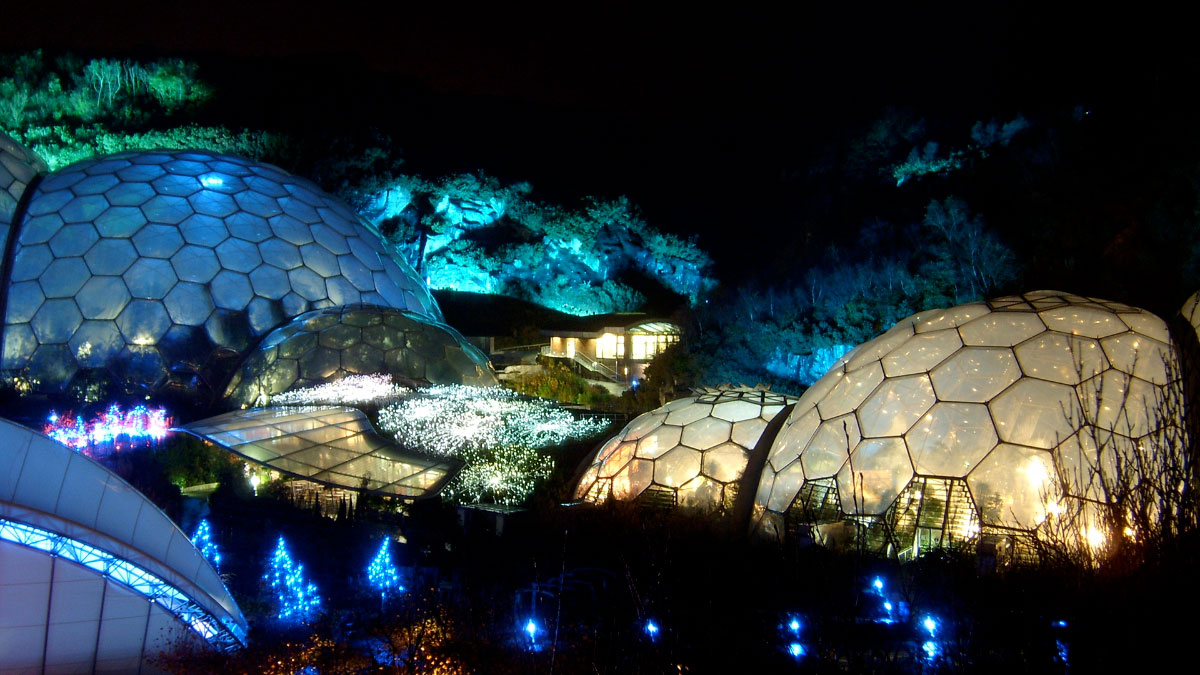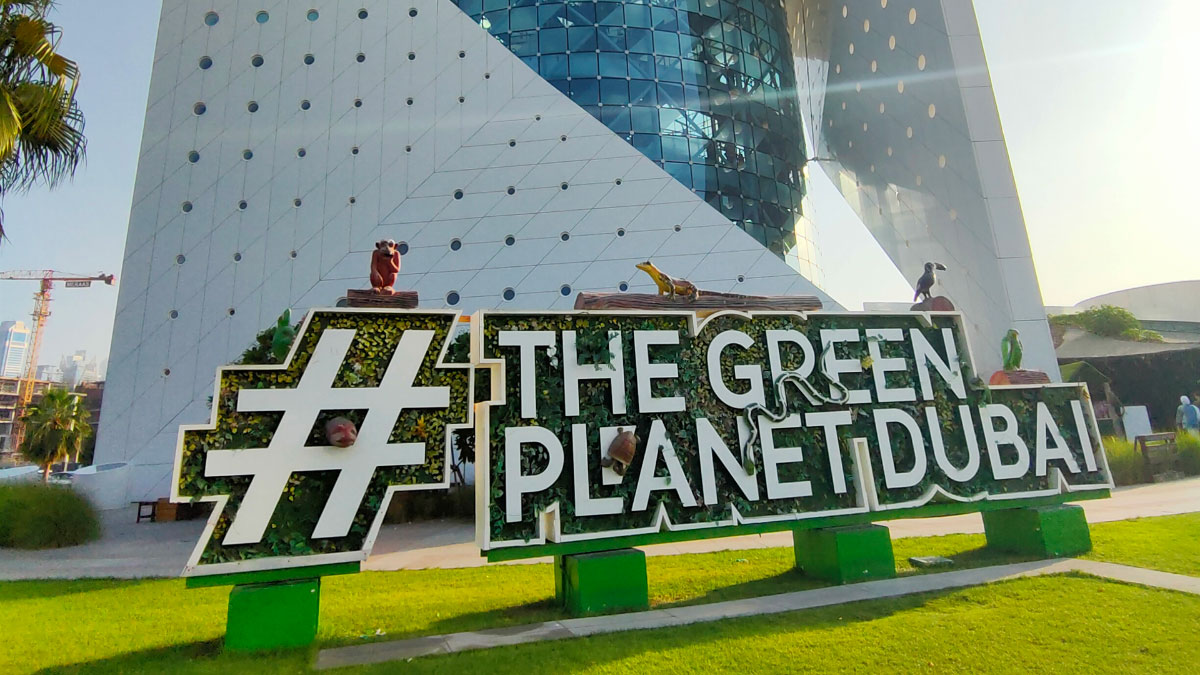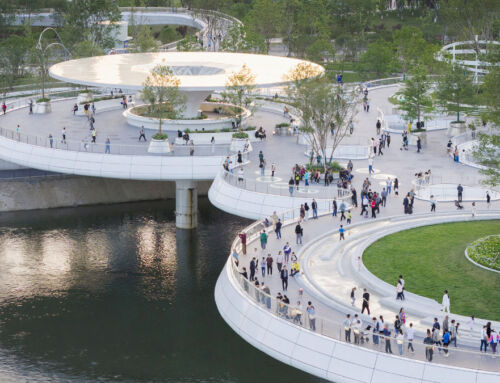Under the unforgiving skies of the Persian Gulf, where sand and asphalt reach extreme temperatures, the United Arab Emirates (UAE) is writing a new chapter in the relationship between humanity and nature. Biodomes, the glass and steel domes that house entire ecosystems, are no longer scientific experiments, but symbols of a national transformation.
The journey from the first prototypes to today’s megastructures reveals a technical and conceptual evolution. Pioneering projects such as Biosphere 2 in Arizona, demonstrated the complexity of recreating self-contained ecological systems, with its failures and lessons learned. The British Eden Project transferred the concept to the educational field, where it showed the plant diversity of the planet under its geodesic domes. However, it is in the Arabian desert that this technology has found its most ambitious expression.
The Green Planet in Dubai represents a qualitative leap forward. This four-level jungle microcosm recreates tropical conditions with millimetre precision – between 70% and 90% humidity, and a constant year-round temperature of 24°C to 26°C – while integrating advanced energy management systems.
Behind these technological marvels is a multifaceted national strategy. The UAE, aware that its oil wealth has an expiry date, is investing in ecotourism, which is already a key segment of its economic diversification plan. They offer immersive experiences, yes, but they also send a clear message: we are preparing for a different kind of future. One where sustainability is not an option, but a condition of existence.
By Manolo Barberá, Senior Hydraulic Modeller in Amusement Logic’s Architecture Dept.
Images: wikimedia.org


